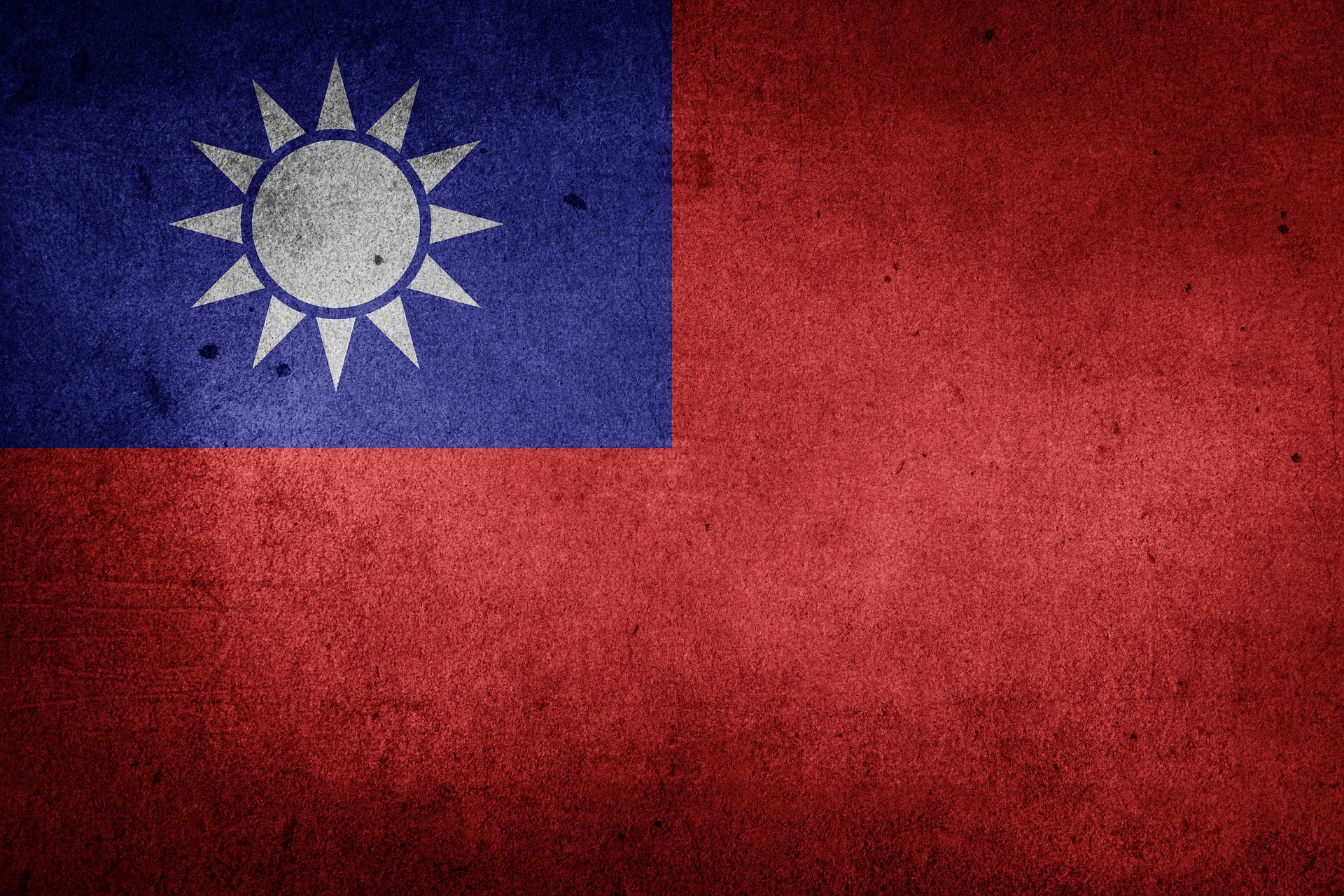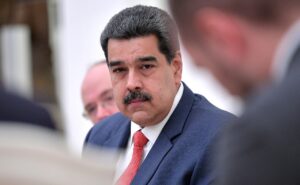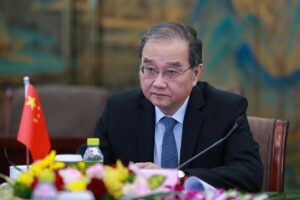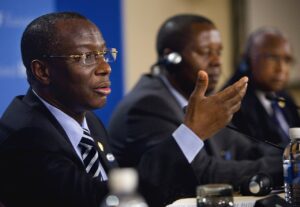Executive Summary
Here we are again. China flexes its muscles; a new U.S. administration stokes confrontation with China to justify its policies, foreign and domestic. China then responds with eager vitriol. Taiwan, despite the best efforts of a restrained pragmatic leadership, has been caught between the two. American analysts have urged the Joseph Biden administration to either defend Taiwan unambiguously or abandon Taiwan to inevitable Chinese control. The U.S. should instead update and strengthen its “dual deterrence,” quietly enhance its military power, and actively improve Taiwan’s security in all dimensions, including through progress toward a bilateral trade agreement. These efforts must be coupled with quiet, authoritative assurances to Beijing, coordinated with Taipei, that we will respect the commitments we have made to China since 1971.
A New U.S. Administration, a Familiar Confrontation
While some may have hoped or feared that the Biden administration would back away from the Donald Trump great power competition with China, President Biden instead has doubled down on that confrontation, seeking to enlist allies in the effort and making it the defining rationale for domestic initiatives from infrastructure to voter rights.
China, under President Xi Jinping, has welcomed great power competition with the United States, with its “wolf warrior” diplomatic spokesmen claiming that China is a rising power returning to its rightful preeminence as the U.S. inevitably declines. Xi Jinping has blamed the United States for the continued separation of Taiwan from China and declared he would prefer to see reunification be peaceful, but that China is prepared to use coercive measures if peaceful means fail.
Taiwan has struggled to navigate its way through this confrontation, insisting that it seeks nothing more than a stable status quo that enables prosperity, honors the democratic will of its people, opens channels for tension reduction with China, and is secure in U.S. support for its continued de-facto autonomy.
If Taiwan is inextricably on the front line of U.S.-China relations, can the three players in this drama reduce confrontation over Taiwan and thereby increase strategic stability between the U.S. and China to the benefit of all three parties? If they cannot, is any strategic stability possible?
Opening Salvos
When President Biden spoke to the virtual Munich Security Conference in February 2021, China was at the center of his argument: “You know, we must prepare together for a long-term strategic competition with China…Competition with China is going to be stiff.” When he gave his remarks to Congress in lieu of a State of the Union address on April 29, he offered competition with China as the reason for reviving the American middle-class economy, investing in U.S. technological preeminence, and retaining a U.S. military presence in the Pacific, parallel to the North Atlantic Treaty Organization’s (NATO) role in Europe, to prevent conflict. No other country, including Russia, merited more than a mention.
When the Biden National Security Council issued its Interim National Security Guidance on March 3, China was again front and center: “…this agenda will strengthen our enduring advantages, and allow us to prevail in strategic competition with China or any other nation.” In his maiden speech as secretary of state, Antony Blinken called the U.S. relationship with China “the biggest geopolitical test of the 21st century,” promising that “[o]ur relationship with China will be competitive when it should be, collaborative when it can be, and adversarial when it must be.”
And when Blinken and National Security Advisor Jake Sullivan met with the People’s Republic of China’s (PRC)Director of the Office of the Central Commission for Foreign Affairs Yang Jiechi and Foreign Minister Wang Yi in Anchorage, the two sides skipped past the expected opening pleasantries to exchange rhetorical salvos in front of the press. Blinken began: “actions by China, including in Xinjiang, Hong Kong, Taiwan…threaten the rules-based order that maintains global stability.”
State Councilor Yang responded in kind:
Both China and the United States are major countries in the world…What China and the international community follow or uphold is the United Nations-centered international system and the international order underpinned by international law, not what is advocated by a small number of countries of the so-called rules-based international order.
Is Taiwan Trapped?
While Taiwan routinely appears at or near the top of rankings of the world’s most successful economies and democracies and has been generally lauded for its initial handling of COVID-19, the Economist recently called Taiwan “The most dangerous place on Earth.” That may seem hyperbolic in a world with Afghanistan and Syria, but it reflects a growing concern that Taiwan’s success may be destroyed by intensifying confrontation between China and the U.S.
Taiwan has been the central issue between the U.S. and China since 1971, when Secretary of State Henry Kissinger traveled secretly to Beijing seeking Chinese cooperation in negotiating an exit from Vietnam and countering the Soviet military. Chinese Premier Zhou Enlai responded that China had only one demand: U.S. cooperation in taking over Taiwan. Until that happened, Zhou said, China’s revolution was unfinished, and U.S.-China relations could not progress. Fifty years later, the U.S. would still prefer to work with China on other issues, allowing the confrontation between Taiwan and China to remain in its unsettled but warless status quo, but China continues to insist that full bilateral cooperation on other issues is dependent on U.S. cooperation in returning Taiwan to China.
When Blinken and Yang first spoke by phone on February 6 after Blinken’s confirmation, they exchanged points the two sides have rehearsed endless times over the past forty years. Yang began:
The Taiwan question, the most important and sensitive core issue in China-U.S. relations, bears on China’s sovereignty and territorial integrity…
The United States should strictly abide by the one-China principle and the three Sino-U.S. joint communiques.
Blinken responded that the “U.S. side will continue to pursue its ‘one-China principle’ and abide” by the communiques, which translates into: the U.S. supports Taiwan’s de-facto autonomy but does not support de jure independence and a final break from China.
Yet the U.S. Interim National Security Strategic Guidance struck a very different tone, describing Taiwan as part of the U.S. clash of values with China, “a leading democracy and a critical economic and security partner, [which we will support] in line with longstanding American commitments.”
A week later, Blinken told Congress that he would push to begin talks on a free trade agreement with Taiwan and invite it to the Summit for Democracy, which the U.S. plans to host later in 2021. In a major break with precedent, Taiwan has also been included in summit statements with Japan and Korea, and the Group of Seven (G-7). And after Trump’s Secretary of State Mike Pompeo abrogated the U.S. Department of State’s Taiwan contact guidance, which for decades had severely limited contact between American. and Taiwanese diplomats in the U.S. and third countries, the Biden administration issued revised Taiwan contact guidance that appears to encourage rather than limit interactions.
China made its anger at U.S. support for Taiwan clear just days after Biden’s inauguration with the largest one-day flight of Chinese air force planes into Taiwan’s Air Defense Identification Zone (ADIZ), including a large number of combat jets, calling this a “solemn warning to external forces,” of China’s determination to deter interference in reunifying Taiwan with China.1Translation from Chinese to English provided by author.And in Anchorage, Yang made China’s anger at U.S. Taiwan policy clear: “Xinjiang, Tibet and Taiwan…are an inalienable part of China’s territory. China is firmly opposed to U.S. interference in China’s internal affairs.”
By contrast with the U.S. and China, Taiwanese officials kept their rhetoric about the U.S. and China relatively low-key. In her 2021 New Year’s Address, Taiwan President Tsai Ing-wen renewed her call for cross-Strait dialogue: “We are willing to facilitate meaningful dialogue under the principles of parity and dignity as long as the Beijing authorities sincerely want to resolve differences and improve cross-[S]trait relations.”
Finding Strategic Stability Over Taiwan
So, what would constitute U.S.-China strategic stability, and what would it mean for the seemingly implacable confrontation over Taiwan? Strategic stability is a situation in which both the U.S. and China can pursue what they identify as their critical national interests without disrupting, and potentially even enhancing, regional and global stability. Such strategic stability could also build a pattern of bilateral interactions that reduces the risk of unintended conflict — especially military conflict — and strengthens the potential for future cooperation. Yet, the realities on all three sides are making stability seem a distant mirage.
Beijing has made it clear that it believes its national power is growing rapidly and may soon suffice to exert diplomatic, economic, and military dominance, at least in the western Pacific. Moreover, the realities of its growing power have enabled Beijing to engage in a diplomacy of resentment, holding the U.S. and other foreign powers responsible for China’s “Century of Humiliation” and insisting that it is time for pay back.
The United States is facing the consequences of a generation of domestic disinvestment and imprudent foreign wars, exacerbated by the Trump administration’s transactional diplomacy and disruptions to the U.S.’s China and Taiwan policy.
The United States is facing the consequences of a generation of domestic disinvestment and imprudent foreign wars, exacerbated by the Trump administration’s transactional diplomacy and disruptions to the U.S.’s China and Taiwan policy. The Biden administration has decided to make China the measure of a renewed international preeminence and domestic revitalization, as it also moves toward a more normal relationship with Taiwan.
Taiwan, which was governed until 1988 by the Nationalist rulers Chiang Kai-shek and Chiang Ching-kuo, who were still fighting a Chinese civil war against the Communists, is now populated by citizens who may see themselves as culturally and linguistically Chinese but who are horrified they might become subject to a government which has threatened to invade Taiwan while committing political suppression in Hong Kong and genocide, or at least cultural genocide, in Xinjiang.
This triangle of distrust is still further exacerbated by two factors. First, China is convinced beyond persuasion that President Tsai and her party have the ideology of independence at their core. No negotiation is possible with such “splittists.” Second, China has learned from its invasion of Tibet, the Tiananmen Square massacre, the repression of Hong Kong, and its seizure and fortification of features in the South China Sea that foreigners will cavil and briefly sanction, but they will do nothing that exacts real long-term costs for China. China has also concluded that the Biden administration, which is withdrawing from Afghanistan, will not go to war over a small distant island, however admirable its democracy.
None of these dynamics are likely to change in the short to medium term. The challenge is how to avoid a crisis over Taiwan and enable strategic stability so that the U.S. and China have time to make the fundamental policy accommodations necessary for a more stable world order. Taiwan is the predicament that was present at the creation of the U.S.-China relationship, and it remains central to how Beijing defines its relationship with Washington. If there is to be strategic stability, it must begin here. Policy analysts have proposed three ways the U.S. might adjust its policies toward Taiwan and China to address these challenges:
- Make U.S. support for Taiwan against China more explicit, as Richard Haass and David Sacks contend. This approach would do away with “strategic ambiguity” in favor of “strategic clarity.” While strategic ambiguity signaled to China that the U.S. might intervene if it threatened or invaded Taiwan with the expectation that would cause China to hesitate, strategic clarity would leave no doubt.
- Declare that the defense of Taiwan is the responsibility of Taiwan, and the U.S. is no longer willing to shoulder the risk of war over Taiwan or the costs to its broader agenda with China, as Charles L. Glaser argues.
- Keep to the current U.S. policy toward Taiwan and China — sometimes called “strategic ambiguity” but increasingly referred to as “dual deterrence”2Richard Bush, Difficult Choices, Taiwan’s Quest for Security and the Good Life (Washington, D.C., Brookings, 2021), 312-316. — as Bonnie Glaser and Michael Mazur have countered. The U.S. would be prepared to intervene if China threatened Taiwan, though exactly how would be unclear or “ambiguous,” but the U.S. would not be ready to intervene if Taiwan declared independence, which would undermine stability in the Taiwan Strait and lead to Chinese military action.
My position is that a policy of “dual deterrence plus-four” would best serve U.S. interests and U.S.-China strategic stability I will explain my pluses in a moment, but first, let’s consider the problems with the initial two possibilities.
The first option proposes that China is not sufficiently deterred from coercive actions against Taiwan because the U.S. position is not sufficiently clear, so the solution is to be more transparent. There are three weaknesses in this argument. First, China has no lack of clarity about the U.S. position. Since the U.S. moved two aircraft carrier battle groups to the vicinity of Taiwan in response to Chinese missile exercises in March 1996, China’s military has concluded it must be prepared to fight the U.S. military if it hopes to force Taiwan to surrender. Second, such declaratory strategic clarity will only reduce China’s flexibility to yield to U.S. pressure and step back from military coercion against Taiwan without a potentially destabilizing national loss of face. Allowing China’s leaders that flexibility is in U.S. interests. Third, China is not deterred by U.S. declaratory clarity; it is deterred by its judgment that U.S. military capability makes successful military action against Taiwan impossible or so costly as to be unbearable.
The second option is based on an expectation that China would understand the U.S.’s withdrawing any commitment to use military force to defend Taiwan as a reasoned effort to realign U.S. commitments with its reduced capabilities. We could, Charles Glaser suggests, continue to sell military equipment to Taiwan. From China’s point of view, this would be one more deceptive half-a-loaf approach by the U.S. In 1979, we promised China that we would withdraw from Taiwan and leave only the most minimal presence there to protect U.S. economic, cultural, and travel interests. Instead, the American Institute in Taiwan (AIT), formed as a private corporation, has functioned from the beginning as an embassy, and we have built AIT a large, modern building in Taipei, indistinguishable from an embassy building and staffed by several U.S. government employees. In August 1982, the U.S. and China signed their third joint communique, which China understood would lead to the end of U.S. arms sales to Taiwan. Instead, we have sold Taiwan large numbers of F-16 combat aircraft, missiles of all sorts, and even main battle tanks.
If the U.S. were to make this retrenchment, China would conclude that the U.S. was acting simply to disguise its weakness, confirming China’s judgment that the U.S. is a declining power. China would 1) increase military pressure against the U.S. and its allies across the region, including in the South and East China seas, and 2) suggest to U.S. allies and partners that its interests would be better served by accommodating China.
If the third option is essentially staying the course, why is it preferable to these two choices or some other alternative we have not yet considered? The first and not inconsequential answer is that it has preserved peace between China and the U.S. in the Taiwan Strait region for over forty years. Second, continuing this policy would signal to China that any coercive steps — from cyberattack to amphibious assault against Taiwan — risk a serious, but unspecified risk of a U.S. counter. Third, it would do so without the humiliating clarity of option one above and would therefore be more likely to succeed. Fourth, because it would build on the U.S. policy that has evolved over the past four decades, China would find it easier to gauge and therefore be more likely to be deterred in a way the U.S. intended. Finally, this approach would also serve to discourage future Taiwanese political leaders from unilateral moves toward de jure independence that would risk a coercive response from China.
To succeed, however, dual deterrence must be strengthened through four additional measures:
- The U.S. must bolster its own military preparedness to intervene against China’s military in the western Pacific. That means platforms and weapons that can counter the most recent and anticipated advances in China’s military technology. It also means training, deployments, and military doctrine that take full advantage of U.S. superiority in weapons and platforms together with exercises that satisfy U.S. commanders so they can confidently move U.S. forces as required in a Taiwan contingency. Demonstrating the renewed strength of U.S. military capabilities through these exercises will also convince China that military coercion would be unwise.
- The U.S. needs to build up its support for all aspects of Taiwan’s security, including its access to international organizations, especially those such as the World Health Organization and International Civil Aviation Organization. The U.S. must also assist Taiwan to resist Chinese efforts to exclude it from preferential international trade and investment arrangements. The announcement that the Office of the United States Trade Representative (USTR) has decided to resume talks with Taiwan under the Trade and Investment Framework Agreement (TIFA) and Blinken’s foreshadowing of this decision are hopeful signs that the U.S. is prepared to move toward an eventual bilateral trade agreement, a significant step forward.
- These steps have to be taken in coordination with Taiwan and our partners and allies. Only by supporting Taiwan in concert with its elected leaders and like-minded democratic nations can strategic stability be advanced.
- And, finally, this deterrence must be complemented by high-level assurances to China, conveyed privately and in coordination with Taiwan, that the United States will continue to honor its one-China policy while lauding Taiwan for its constructive role in the global community. Striking that balance will not be easy, nor will it be easy for China to accept, but it will be essential in protecting Taiwan’s status quo.
This “dual deterrence plus-four” is the approach most likely to effectively deter China from actions toward Taiwan that risk destabilizing strategic stability to the benefit of the United States, Taiwan, the region, and China itself.
Conclusion: From Confrontation to Restrained Confidence
As stated at the beginning, the U.S. and China have been here before, although both sides are threatening the other’s interests and values with an intensity seldom seen before. China is proclaiming its rise to great power status, co-equal or almost co-equal with the United States; President Biden has made outcompeting China the measure of his administration. The militaries on both sides have ramped up their capabilities to deter and defeat the other. The two nations have gone beyond competition to confrontation, and both have repeatedly made determining Taiwan’s future the center of that confrontation. Whether you call Taiwan a pawn or not, it is entrapped by this clash. For that very reason, reducing tensions over Taiwan could be the initial step away from a potentially disastrous instability and perhaps toward building a restrained confidence on both sides that other outstanding conflicts can be successfully addressed. A strengthened U.S. policy of dual deterrence, paired with authoritative assurance, can be a first step toward that confidence in a renewed great strategic stability between these two great powers.
David J. Keegan is an adjunct lecturer in China Studies at Johns Hopkins School of Advanced International Studies (SAIS), teaching classes on U.S. relations with Taiwan and China and on U.S.-China relations. He previously taught courses on U.S.-China relations, Northeast Asia, and the Pacific at the State Department’s Foreign Service Institute. He holds a Ph.D. in Chinese History from the University of California, Berkeley.
David Keegan retired from the Department of State in 2012. He was Deputy Director of the American Institute in Taiwan in Taipei and served as Director of the Office of Taiwan Policy in the Bureau of East Asian and Pacific Affairs. He also served as Deputy Chief of Mission and Chargé at the U.S. Embassy in New Zealand as well as Director of the Office of Regional Affairs in the Bureau of South and Central Asian Affairs, and Director of the Office of Strategic, Proliferation, and Military Affairs in the Bureau of Intelligence and Research.
Notes
- 1Translation from Chinese to English provided by author.
- 2Richard Bush, Difficult Choices, Taiwan’s Quest for Security and the Good Life (Washington, D.C., Brookings, 2021), 312-316.




